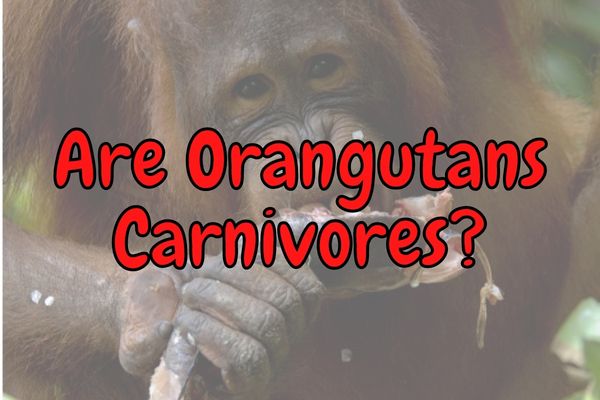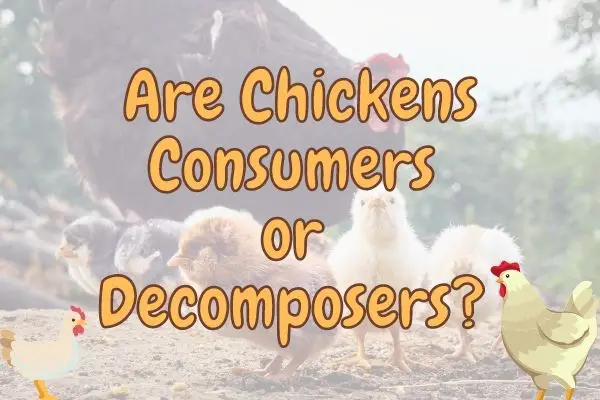Insects are small animals that have six legs, three body parts, and a hard exoskeleton. They can be found in nearly every environment on Earth and are essential to the survival of many ecosystems.
More than 50% of all insects are herbivores, meaning they only eat plants. Some of the most important insects, like bees and butterflies, are herbivore pollinators that help plants reproduce. Other insects, like ladybugs and lacewings are carnivores and they eat other harmful insects that could damage crops.
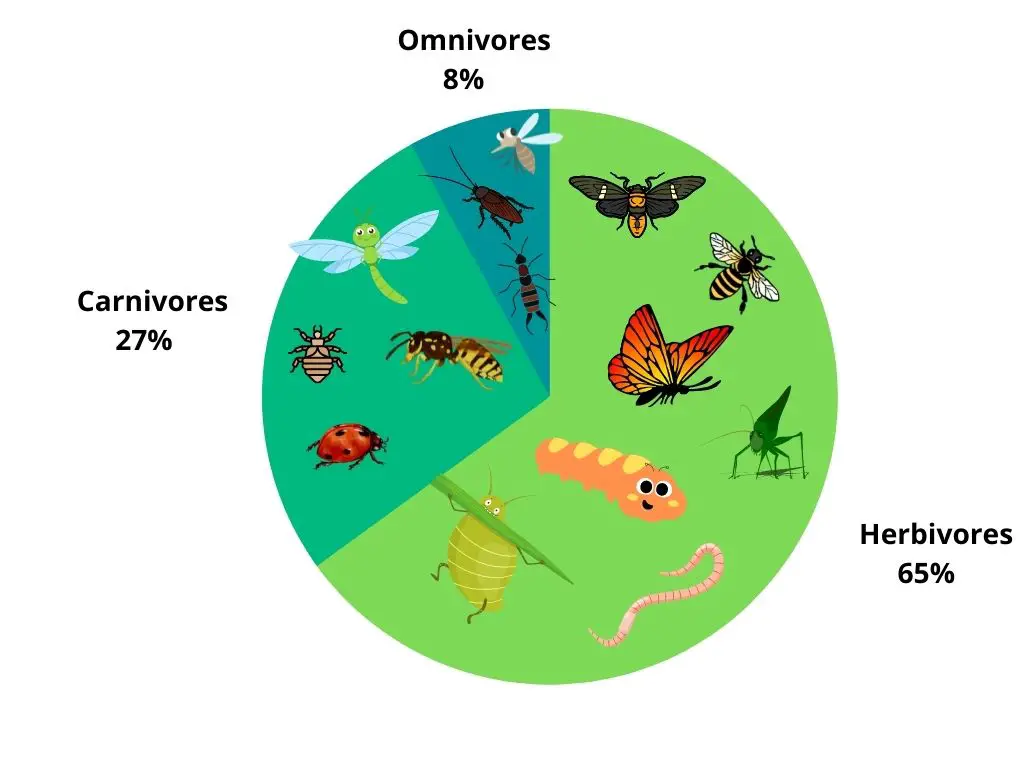
Still, other insects, like dung beetles and termites are detritivores that help decompose organic matter back into the food chain!
Apart from being important pollinators, herbivorous insects also help to keep plants in check and prevent them from taking over. Herbivore insects also provide food for other animals in the ecosystem, such as birds and bats. Without insects, many of these animals would starve to death.
Contents
What Do Insects Eat?
Insects are arthropods belonging to the class Insecta. The study of insects is called entomology. They are found on every continent (except Antarctica), in most climates, and in nearly all terrestrial habitats.
Insects are opportunistic feeders and their diet depends on the species and their environment. Most insects are herbivores and feed primarily on plants. Some common plant foods include leaves, stems, flowers, fruits, and seeds.
Herbivore insects feed on plants do so by chewing small pieces off leaves with biting jaws or by sucking out the sap or nectar from the stems, leaves or flowers of the plant.
Other insects are predators or scavengers and feed on other animals or decaying organic matter.
There are more insect species than any other type of animal, around one million described species (about 30% of all described animal species).
Most haven’t been named or described yet though, and estimates for the actual number range from about 5 million to 100 million or more.
About 400.000 of these species are known to be herbivores, with the next largest group being the carnivores and the smallest group being actual omnivores.
These three groups are not completely set in stone though, as some herbivores might sometimes eat other animals if plant food is unavailable or the nutrient levels are low.
The standing hypothesis for how omnivore insects evolved is in fact that omnivore insects evolved from herbivore insects that lost their access to nutritious plant matter. They then had to feed on other insects to survive!
This ability to switch from a herbivore diet to a carnivore diet is an important feature of many insects that allows them to adapt quickly to changing conditions and food availibility. It is also an important buffer that keeps plant and prey animal populations in check!
Herbivore Insects:
There are many examples of insects belonging to the different categories and I am sure you know some of these insects already from around your house?
Important herbivore insects are all those pollinators you see in your backyards like bees, butterflies, and those small black flower beetles!
Some insects that are herbivores are:
- 1. Weevils
- 2. Aphids
- 3. Butterflies
- 4. Caterpillars
- 5. Cicadas
- 6. Leaf miners
- 7. Bees
- 8. Moths
- 9. Grasshoppers
- 10. Many Beetles (like the weevils, leaf beetles, and Longhorned beetles)
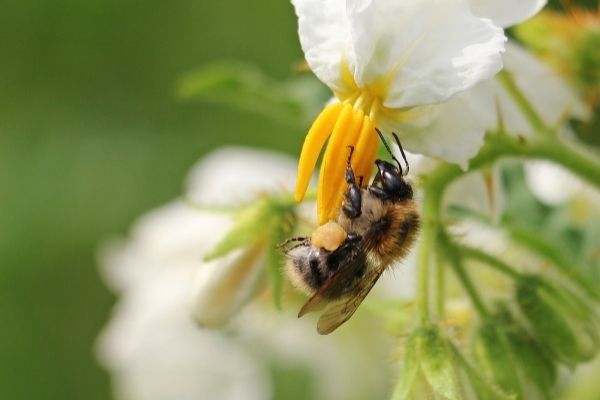
- Weevils: Weevils are a type of beetle that belong to the family Curculionidae. Many weevils are considered herbivores because they feed primarily on plant matter. They often target seeds, fruits, leaves, and stems of various plants, including crops and ornamental plants. Their mouthparts are specialized for chewing, allowing them to consume plant tissues.
- Aphids: Aphids are small, soft-bodied insects that belong to the order Hemiptera. They are well-known herbivores that feed on the sap of plants. They use their piercing-sucking mouthparts to extract nutrients from leaves, stems, and other plant parts. Aphids reproduce rapidly and can cause damage to crops by weakening the plants and transmitting diseases.
- Butterflies: Butterflies are insects in the order Lepidoptera, and while adult butterflies primarily feed on nectar, their larvae, called caterpillars, are herbivores. Caterpillars have specialized mouthparts known as mandibles, which they use to chew and consume plant leaves. They have a wide range of host plants, and different species of caterpillars may specialize in feeding on specific plant families or species.
- Caterpillars: Caterpillars, the larval stage of butterflies and moths, are voracious herbivores. They have chewing mouthparts that allow them to feed on plant leaves, stems, and flowers. Caterpillars play a crucial role in the life cycle of butterflies and moths, as they accumulate nutrients and energy from plants to undergo metamorphosis into adult forms.
- Cicadas: Cicadas are insects belonging to the order Hemiptera, specifically the family Cicadidae. While most cicadas are known for their distinctive buzzing calls and are often associated with their adult stage, their nymphs are herbivorous. Cicada nymphs live underground and feed on the sap from the roots of various trees and shrubs.
- Leaf miners: Leaf miners are the larvae of various insect species, including flies, moths, and beetles, that live inside leaves and feed on the plant tissues between the leaf layers. They create characteristic winding tunnels or mines in the leaves, hence their name. Leaf miners are considered herbivores because they consume and derive nutrients from the plant tissues they feed on.
- Bees: Bees are primarily known for their role as pollinators, but they also consume plant materials as herbivores. While nectar is their primary food source, bees also collect pollen, which is a vital protein source for their larvae. Bees collect pollen from flowers and mix it with nectar to create a nutrient-rich food called “bee bread,” which they use to feed their young.
- Moths: Moths are insects belonging to the order Lepidoptera, just like butterflies. While some moth species are nectar feeders, many moth caterpillars are herbivores. Moth larvae have chewing mouthparts and feed on a wide variety of plants, including leaves, stems, and flowers. They can be found in various habitats, ranging from forests to agricultural fields.
- Grasshoppers: Grasshoppers are well-known herbivorous insects in the order Orthoptera. They have strong mandibles that allow them to chew and consume plant materials such as leaves, stems, and grasses. Grasshoppers can be significant agricultural pests, as they can consume large quantities of vegetation, potentially causing damage to crops.
- Many Beetles: Numerous beetle species, including weevils, leaf beetles, and longhorned beetles, are herbivores. These beetles have specialized mouthparts for chewing plant tissues. They may feed on leaves, stems, flowers, fruits,
Omnivore insects:
Some insects that are omnivores (insects that eat both plants and animals) are:
1. Ants
2. Mosquitoes (read why they are not considered carnivores)
3. Silverfish
4. Cockroaches
5. Housefly
6. Earwigs
7. Crickets
8. Beetles
9. Fireflies
10. Wasps
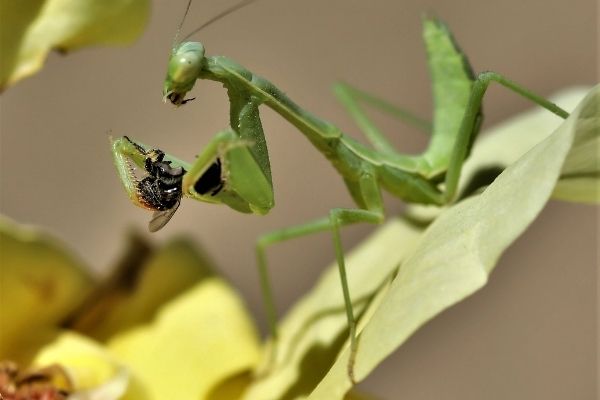
- Ants: Ants are social insects that feed on a wide variety of foods including nectar, pollen, insects, and even other ants. While some species are primarily herbivorous, others are known to scavenge and hunt for small prey such as other insects or arthropods. Thus, ants are considered omnivores.
- Mosquitoes: Mosquitoes are not considered carnivores because they do not feed exclusively on animal matter. While female mosquitoes require blood for egg production, they also feed on nectar and plant juices. Male mosquitoes feed solely on plant juices and do not consume blood at all.
- Silverfish: Silverfish are small, wingless insects that are typically found in damp environments. They feed on a variety of organic materials including starches, sugars, and proteins. In addition to feeding on plant matter, they are also known to consume dead insects and other arthropods, making them omnivores.
- Cockroaches: Cockroaches are known for their scavenging behavior and are able to consume a wide variety of foods, including plant matter, decaying organic matter, and even other insects. They have been observed feeding on dead cockroaches and even their own shed skins, which makes them omnivores.
- Housefly: Houseflies feed on a variety of organic materials including nectar, plant sap, and decaying organic matter. They are also known to feed on animal matter, such as feces and carrion. This broad diet makes them omnivores.
- Earwigs: Earwigs are known for their pincher-like cerci at the end of their abdomens, which they use for defense and to capture prey. They are primarily omnivorous, feeding on both plant matter and small insects or arthropods.
- Crickets: Crickets are known for their chirping, which is produced by rubbing their wings together. They are omnivores, feeding on a variety of foods including plants, fungi, and small insects or arthropods.
- Beetles: Beetles are one of the most diverse groups of insects and have a wide variety of feeding habits. While some species are strictly herbivorous, others are predators, scavengers, or omnivores. Omnivorous beetles feed on a variety of foods including plants, fungi, and other insects or arthropods.
- Fireflies: Fireflies are known for their bioluminescence, which they use to attract mates. They are omnivorous, feeding on a variety of foods including nectar, pollen, and small insects or arthropods.
- Wasps: Wasps are known for their stingers and their role as predators, but they are also omnivores. They feed on nectar and pollen, and some species also scavenge for decaying organic matter and feed on other insects or arthropods.
Carnivore insects:
Examples of insects that are mainly carnivores are:
1. Bed bugs
2. Beetles (such as tiger beetles and rove beetles)
3. Assassin bugs
4. Dragonflies
5. Lice
6. Hornets
7. Lacewings
8. Ladybugs
9. Praying Mantis
10. Doodlebugs (larvae of antlions)
- Bed bugs: Bed bugs are small, parasitic insects that feed exclusively on blood, typically from humans or other warm-blooded animals. They are considered carnivores because they rely on a diet of blood to survive and reproduce. They use their specialized mouthparts to pierce the skin of their host and extract blood.
- Beetles: Beetles, including tiger beetles and rove beetles, are a diverse group of insects. While not all beetles are carnivorous, many species within the beetle family are predatory. They have strong jaws or mandibles that allow them to capture and consume other small invertebrates, such as insects, spiders, and even other beetles.
- Assassin bugs: Assassin bugs are known for their predatory behavior, hence their name. They have a specialized feeding structure called a rostrum, which they use to pierce their prey and inject digestive enzymes. The enzymes break down the internal tissues of the prey, which the assassin bugs then suck out. They primarily feed on other insects, including caterpillars, aphids, and other small arthropods.
- Dragonflies: Dragonflies are highly efficient predators, both in their larval stage (nymphs) and as adults. Dragonfly nymphs are aquatic and have elongated jaws that they use to catch and consume small aquatic organisms, such as tadpoles, small fish, and other insect larvae. Adult dragonflies have large, powerful wings and elongated abdomens. They prey on flying insects, including mosquitoes, flies, and other small flying insects, which they catch in mid-air.
- Lice: Lice are small, wingless insects that infest the hair and feathers of birds and mammals, including humans. While most species of lice are parasites that feed on the blood of their hosts, some species of lice are scavengers and feed on dead skin cells and debris. The blood-feeding species are considered carnivores because they rely on blood as their primary food source.
- Hornets: Hornets, specifically the European hornet and related species, are social wasps that are known for their predatory behavior. They feed on a variety of insects, including flies, bees, caterpillars, and other small invertebrates. Hornets capture their prey using their powerful mandibles and can deliver venomous stings to immobilize or kill their victims.
- Lacewings: Lacewings are insects known for their delicate, lacy wings and prominent eyes. They are beneficial insects in many ecosystems as they are voracious predators in their larval stage. Lacewing larvae, often called aphid lions, have strong jaws and feed on a wide range of small insects, including aphids, mites, caterpillars, and other soft-bodied pests.
- Ladybugs: Ladybugs, also known as ladybirds or lady beetles, are beetles that belong to the family Coccinellidae. While ladybugs are commonly associated with their role in controlling aphid populations by feeding on them, they are not exclusively aphidivorous. They are generalist predators and feed on a variety of soft-bodied insects, including aphids, scale insects, mites, and small caterpillars.
- Praying Mantis: Praying mantises are iconic predators known for their distinctive body shape and their ability to catch prey using their raptorial forelegs. They have a diverse diet that includes various insects, spiders, and even small vertebrates such as frogs and lizards. Praying mantises are ambush predators, patiently waiting for their prey to come within striking distance before capturing and consuming them.
- Doodlebugs (larvae of antlions): Doodlebugs, specifically the larvae of antlions, are carnivorous insects
Are Insects Producers, Consumers, or Decomposers?
When it comes to the roles insects play in an ecosystem, they can actually exhibit characteristics of all three: producers, consumers, and decomposers. Insects are incredibly diverse and have adapted to fill various ecological niches, allowing them to contribute to the functioning of ecosystems in multiple ways.
First and foremost, many insects can be considered consumers. They often feed on plant material, other insects, or even vertebrates, depending on their specific diet. This makes them an important part of the food chain, occupying different trophic levels. For example, herbivorous insects consume plants, while predatory insects feed on other insects or small animals. In this sense, they act as consumers by obtaining energy and nutrients from the organisms they consume.
On the other hand, certain insects, like bees and butterflies, can be considered producers. Through a process called photosynthesis, plants convert sunlight into energy, and insects that feed on plant materials indirectly harness this energy. For instance, bees collect nectar from flowers, which is used as a source of energy to produce honey. Similarly, butterflies feed on nectar, contributing to the pollination of flowers and enabling plant reproduction. In this role, insects serve as intermediary producers, utilizing the energy captured by plants to sustain themselves and benefit the ecosystem as a whole.
Lastly, many insects play a crucial role as decomposers. After plants and animals die, insects help break down their remains and accelerate the process of decomposition. Some insects, such as certain species of beetles and flies, are known as scavengers, feeding on carrion and decaying matter. By consuming dead organisms, they facilitate the recycling of nutrients back into the soil, enabling new life to thrive. In this capacity, insects act as decomposers, aiding in the breakdown of organic matter and nutrient cycling.
It is important to note that while insects can be categorized into these roles, their ecological contributions are not limited to just one category. Many insects exhibit complex life cycles, transitioning from one role to another as they progress through different developmental stages. Furthermore, the specific ecological functions of insects vary depending on the species, habitat, and environmental conditions. Hence, the diversity and adaptability of insects allow them to fulfill various roles simultaneously, making them essential components of ecosystems worldwide.
As we explore the fascinating world of insects, it becomes apparent that their contributions extend beyond scientific categorizations. They bring beauty to our surroundings with their vibrant colors, intricate behaviors, and complex societies. They play a fundamental role in the pollination of plants, which sustains agricultural systems and ensures the production of fruits, vegetables, and other crops. In addition, insects serve as a vital food source for many other organisms, including birds, reptiles, and mammals. Moreover, they often serve as indicators of ecosystem health, with changes in their populations reflecting broader environmental changes.
Therefore, while insects can be classified as producers, consumers, and decomposers, their significance reaches far beyond these labels. They possess an extraordinary capacity to shape and maintain the delicate balance of our natural world, making them an integral part of our lives and deserving of our admiration and protection.
What Type of Consumer is an Insect?
There are four types of consumers: omnivores, carnivores, herbivores, and decomposers. Insects are mostly herbivores and thus mostly primary consumers.
However, insects can be primary consumers, secondary consumers or tertiary because they may eat plants, other animals, and even other predatory animals.
Generally speaking, herbivores are primary consumers, omnivores are secondary consumers and carnivores are tertiary consumers. Quaternary consumers are those animals that are considered apex predators.
Can Insects be Considered Decomposers?
Insects do not eat dead or decaying matter and are therefore not decomposers, but they can be detritivores.
Detritivore insects eat dead plants in the form of leaves, wood (like termites), feces (dung beetles), and soil (earthworms). This helps reuse the nutrients of plants that would otherwise have to go through the slow process of decomposition by microorganisms on their own.
By eating dead plants, insects can speed up this process and offer some of the raw nutrients back to the environment when leaving their feces.
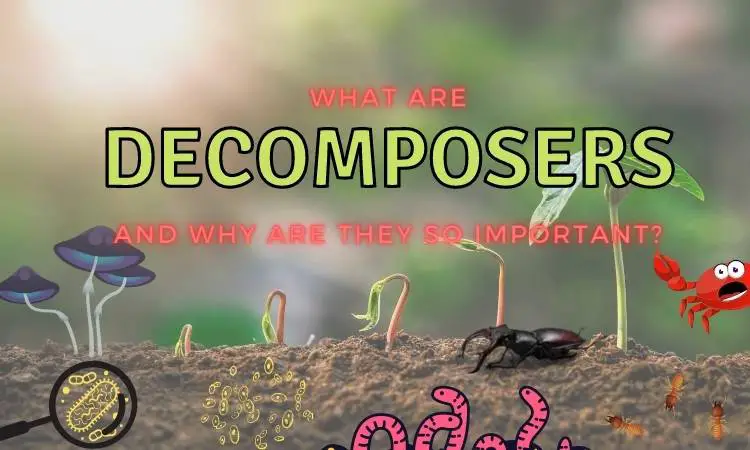
The bacteria in the guts of some insects play a very important role in their digestion and these microorganisms may be considered true decomposers.
Where are Insects in the Food Chain?
Insects sit very low in the food chain because they only eat plants. Animals that only eat plants are primary consumers and are placed on the second trophic level in the energy pyramid.
Insects play a vital role in the food chain, occupying various positions depending on their ecological niche and interactions with other organisms. Let’s explore where insects fit into the food chain and highlight different species and examples along the way.
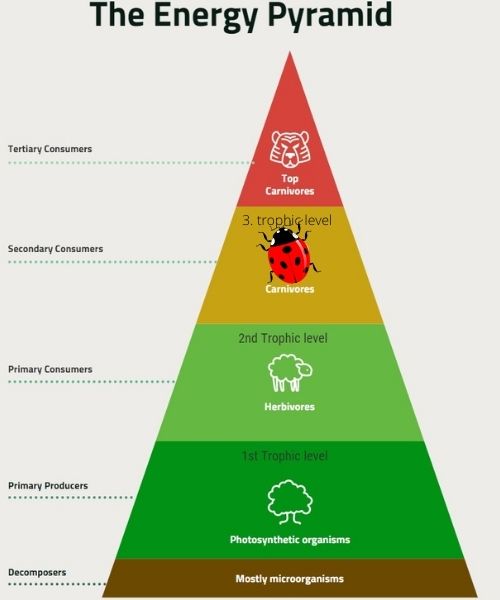
At the foundational level, insects often serve as primary consumers, directly feeding on plant matter. Herbivorous insects, such as grasshoppers, caterpillars, and beetles, consume leaves, stems, and other plant parts.
These insects convert plant biomass into energy and nutrients, initiating the transfer of energy within the food chain. For instance, the tobacco hornworm (Manduca sexta) and the monarch butterfly caterpillar (Danaus plexippus) feed on specific plant species, establishing close ecological connections.
As primary consumers, insects become prey for a range of organisms, thereby becoming an essential energy source for secondary consumers. Numerous insectivorous animals rely on insects as a primary food source.
Birds like swallows, warblers, and flycatchers, as well as reptiles like lizards, frequently feed on flying insects. Insect-eating mammals, such as bats, anteaters, and shrews, also rely heavily on insects for sustenance. For example, the Mexican free-tailed bat (Tadarida brasiliensis) is a voracious consumer of night-flying insects.
Within the insect world itself, some species have developed predatory behaviors, occupying the role of secondary consumers. Predatory insects, including dragonflies, mantises, and robber flies, actively hunt and feed on other insects. They contribute to controlling populations of herbivorous insects and maintain ecological balance. A notable example is the praying mantis (Mantis religiosa), known for its ambush-style hunting and capturing a variety of insects, including grasshoppers and flies.
Insects also have interactions with decomposers, which play a crucial role in breaking down organic matter and recycling nutrients. Insects such as dung beetles and carrion beetles feed on animal remains, dung, and decaying plant material. These insects aid in the decomposition process, ensuring the recycling of essential nutrients back into the ecosystem.
Moreover, insects can even occupy higher trophic levels in some instances. For instance, parasitic wasps inject their eggs into other insects, utilizing them as hosts for their offspring. These eggs hatch, and the wasp larvae consume the host from within, ultimately leading to its demise. This trophic relationship showcases the complexity and diversity of interactions within the insect world.
In summary, insects are found at various levels within the food chain, serving as primary consumers, prey for secondary consumers, predators of other insects, and contributors to the decomposition process.
Their presence and interactions are critical for maintaining ecosystem balance and functioning. The examples mentioned, including grasshoppers, caterpillars, beetles, dragonflies, mantises, bats, and parasitic wasps, offer a glimpse into the intricate web of life where insects are active participants.
The energy transferred by an insect is the energy from the grass or other plants that they eat. This energy is transferred to the animals that eat the insect, for example, a grasshopper or an aphid.
This energy is then again transferred to the higher trophic levels via carnivorous insects, for example when the ladybug eats an aphid.
Food chains simply demonstrate how energy moves from one organism to the next, in a straight line.
Are Insects Autotrophs or Heterotrophs?
All insects are heterotrophs because they eat other living organisms. Practically no animals are autotrophic because animals do not get their energy directly from the sun as plants do. That is, animals like insects are heterotrophs and cannot make their own energy!
What Animals Prey on Insects?
Predators of insects include carnivorous insects like spiders, ants, beetles, wasps, and flies but also many larger animals like birds, rodents, and bats eat insects. In fact, bats are the animals thought to eat the most insects in the wild!
Some plants, like the Venus flytrap, will also “eat” insects!
While numerous animals will hunt for and eat insects in the wild, this is not a problem for the insects!
Most insects are numerous and divide fast so most species are not threatened by extinction.
Conclusion
In this blog post, I have looked into the diet of insects! Insects have some of the most astounding diets on the planet, eating everything from other insects, plants, and even other animals!
Of course, it goes without saying that not all insects eat plants, however, there are many species that are herbivores, but what really amazes scientists is the range of animals that insects eat, everything from other insects, to birds and mammals!
They are such an important food source, that drives energy through the food chain and sustains life across the planet! Insects, like those inching mosquitoes might be annoying, but they all have their important function in the ecosystem!
I hope you enjoy reading this article, and I do encourage you to look into my other articles on this blog for more exciting facts about wildlife and animal diets!
References
Omnivorous Insects: Evolution and Ecology in Natural and Agricultural Ecosystems. Nature Education.
Coll and Guershon. Omnivory in terrestrial arthropods: mixing plant and prey diets. Annu Rev Entomol 2002.
Grimaldi and Engel 2005. Evolution of the Insects.


